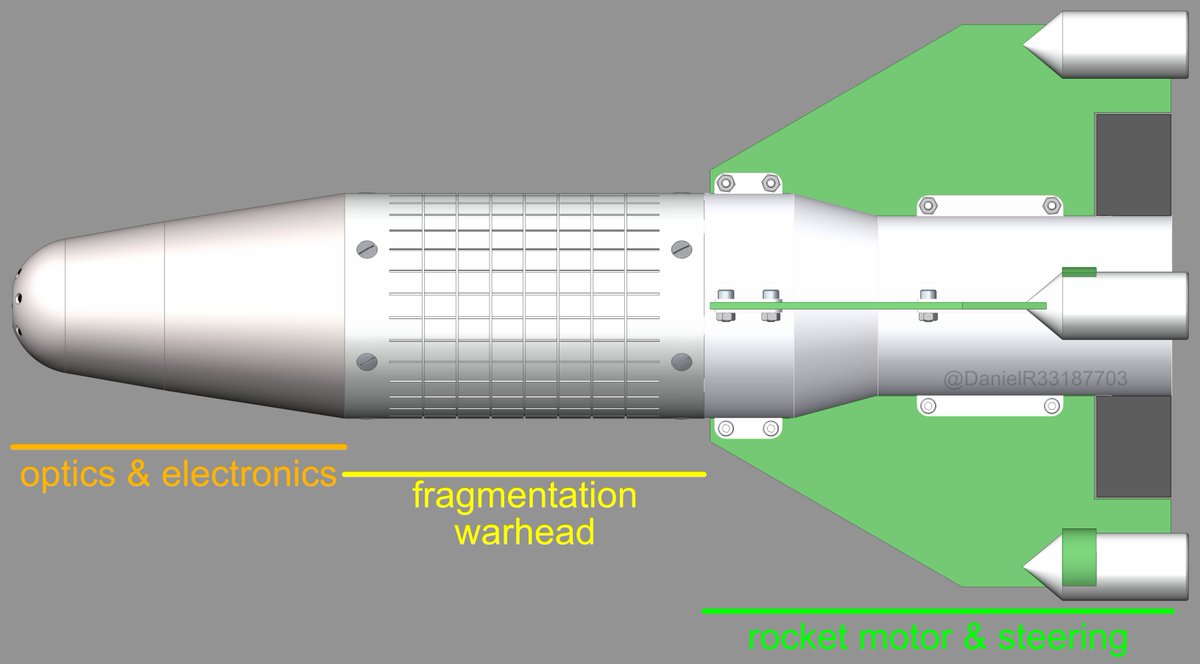1. Recently, a very interesting #Ukrainian precision-guided munition was captured by russians. This is a closer look at this (possibly important) weapon.
t.me/vanguard_space…
t.me/vanguard_space…

2. This munition was captured by russians who posted 2 photographs of a crashed Ukrainian Baba Yaga drone along with. Also shown was an interesting munition that had been damaged in the crash. By carefully studying these 2 photos, a drawing was made. 

3. This is the resulting CAD drawing produced (by me). Note that this drawing is only an approximation and some details are omitted. Overall length was estimated as roughly 52 cm and diameter as 10 cm. Conceptually, it has the three main sections shown here. 

4. The centre section is the fragmentation warhead. This uses parallel grooves, and is conceptually similar to other explosives such as the larger one used in Ukraine’s Fierce drone. Lots of information is available on this type of munition. 

5. The nose has a central optical detector. There are 6 smaller optical elements that could be detectors or emitters. The dark colour suggests these operate in the infrared. The front section likely contains a battery & electronics. 

6. The rear section appears to contain a rocket motor to provide enough air speed so that the fins become effective. Four small steering fins control direction. Actuators for these fins must also fit inside. Static fins (wings) may be made of same material as circuit boards. 

7. There appear to be four rear-facing optical detectors. These may be for “beam-riding” where the munition follows a laser beam pointed at the target. This raises the question why this munition has both rear-facing and forward-facing optics. 

8. The nose optics could be for laser guidance, and detect laser light reflected by a target. The target would need to be designated (painted) by a laser carried by the drone. Alternatively, these optics may be for measuring the distance to the target for airburst applications. 

9. Compared to other missiles, the optics appear to be relatively simple & lightweight, suggesting this is intended for short range. Also, the availability of low-cost but powerful lasers may reduce the need for expensive optics. 

10. Overall, this munition may be designed specifically for drones operating at low altitude, e.g., 1000 m or less. The Baba Yaga drones often operate at 100 m altitude making them easy targets for small arms. Going to 1000 m would make them much more difficult to shoot down. 

11. If you found this thread interesting, please repost as a quote. Respectful comments are always welcome. Before commenting note that this thread does not help russians who have captured a complete system, and thus know much more than is shown here. 

• • •
Missing some Tweet in this thread? You can try to
force a refresh






















